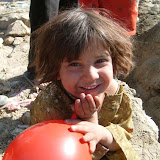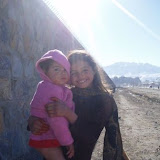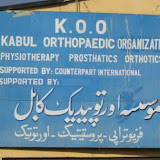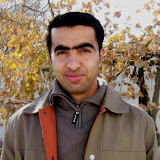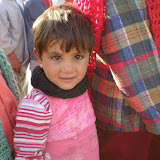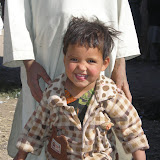Today was a down day so I did a lot of reading. I had to resort to living vicariously through the photos of LtCol Johnson who was invited to a lunch meeting that took place off base. He was able to drive to the top of a very tall mountain and take some beautiful pictures. The pictures allow you to see how large and beautiful Kabul really is. I included a little history of the different places that I researched off the web. Hope you enjoy.
Kabul City Walls, from Radio Afghanistan: "Around the emergence of Islam, the Kabul Shahan dynasty, a remnant of the small Kushanids, ruled ancient Kabul and its surrounding areas. King Ratbil Shah (or Zanbil Shah), a king of this line, was a very cruel tyrant. To stop attacks from abroad, the Shah decided to build a high wall around the city. He forced all the youth of the city to build the wall as soon as possible. So, the youngsters of the city were working very hard under the watchful eye of wardens supervising the construction of the wall. If anyone refused to work, he was buried alive in the walls. Thousands of youth fell victims to the tyranny of the evil king. The wall that still remains today on the Shirdarwaza and Aasmae mountains is a reminder of that dark era."

Habibia High School, from Google: "Afghanistan’s Who’s Who attended this important school in Kabul. Hamid Karzai, former King Zahir Shah and nearly 50% of the Afghan ministers graduated from this school, just to give an example. Though, the Taliban reduced Habibia to a bullet-ridden shell, it was reconstructed with international support and reopened with a modern and up-to-date look in 2005."
-
Pul-e Khishti Mosque, from Kabul Caravan: "Standing in the centre of old Kabul, the Pul-e Khishti Mosque was originally erected in the late 18th Century, but largely rebuilt under Zahir Shah in the late 1960s. Its can be picked out by its large blue dome but is otherwise architecturally indistinct, a mix of international modern style punctuated with traditional Afghan tiling."
-
From Google: "Mosque in Kabul known under various names such as Masjid-e Pul-e Khishti or Pul-i-Khishti Masjid. Client for construction of this mosque of the Abdali period/style was Zaman Shah (1770 - 1844), the fifth son of Timur Shah."
Here is a 3-D view.
-
Shah do Shamshira Mosque, from Google: "The large two-storied mosque across the river from Timur Shah's mausoleum stands on the site of a mosque originally dedicated in 1544. The present building was commissioned by King Amanullah's mother and constructed in the 1920s. Its name, meaning the Mosque of the King of Two Swords, relates to an early legend concerning the arrival of Islam in Kabul. "
Shah do Shamshira Mosque, from Google: "The large two-storied mosque across the river from Timur Shah's mausoleum stands on the site of a mosque originally dedicated in 1544. The present building was commissioned by King Amanullah's mother and constructed in the 1920s. Its name, meaning the Mosque of the King of Two Swords, relates to an early legend concerning the arrival of Islam in Kabul. "
-
From Kabul Caravan: " Shah-Do-Shamshira Mosque Built in the 1920s on the site of a mosque dating back to the 16th Century, the Shah-Do-Shamshira Mosque is an architectural disaster. A two-storied structure in yellow, decorated with Italianate stucco, giving an effect that could be described as 'Afghan Baroque'. The name- the Mosque of the King of Two Swords- relates to the Arab conquest of Kabul, and the legendary death of a general fighting the Hindu defenders. Wielding two scimitars, the general led his troops to victory, despite having been beheaded in an earlier battle. The mosque sits on the north bank of the Kabul River facing the Mausoleum of Timur Shah."
That is pretty impressive that he was able to fight despite being beheaded in a previous battle!
-
Here is a 3-D model of the mosque.
Thanks for reading.











